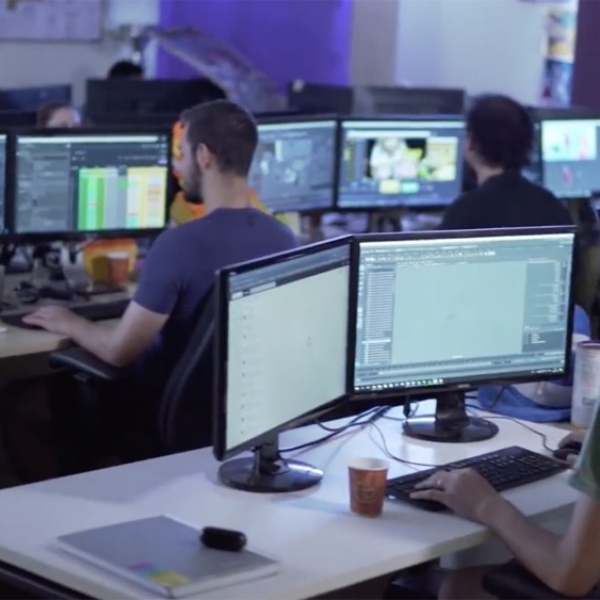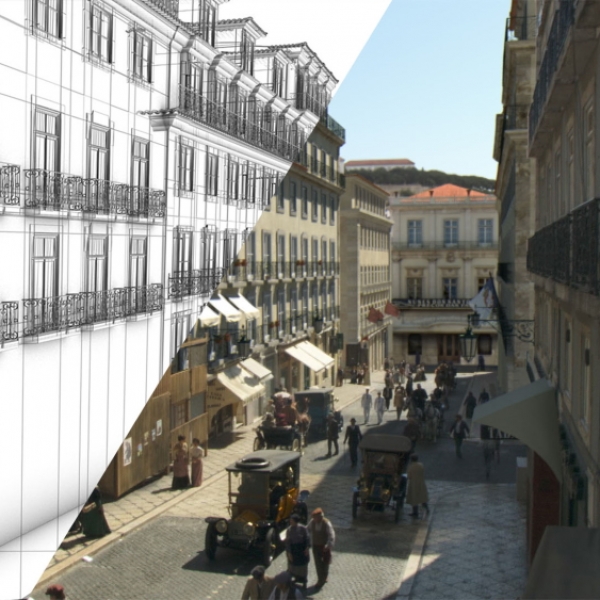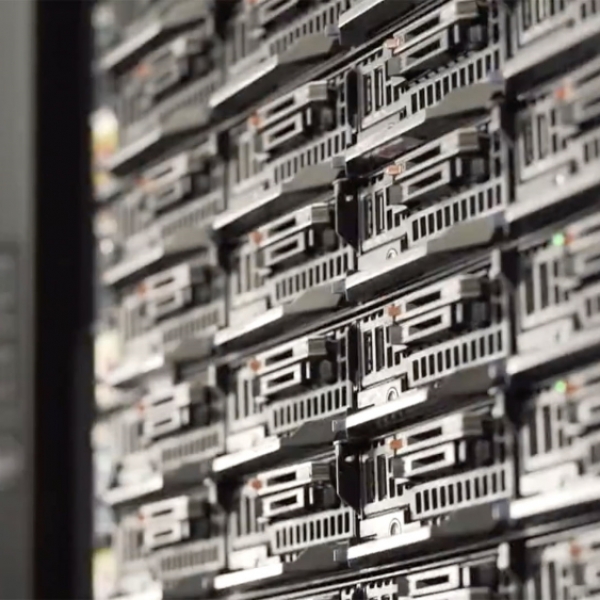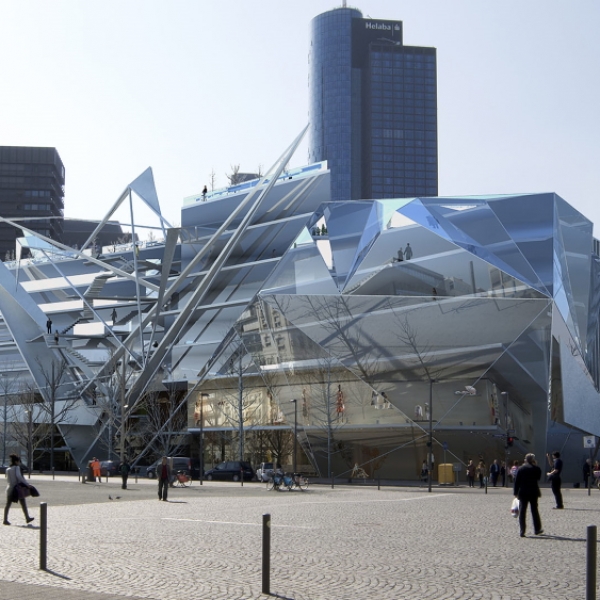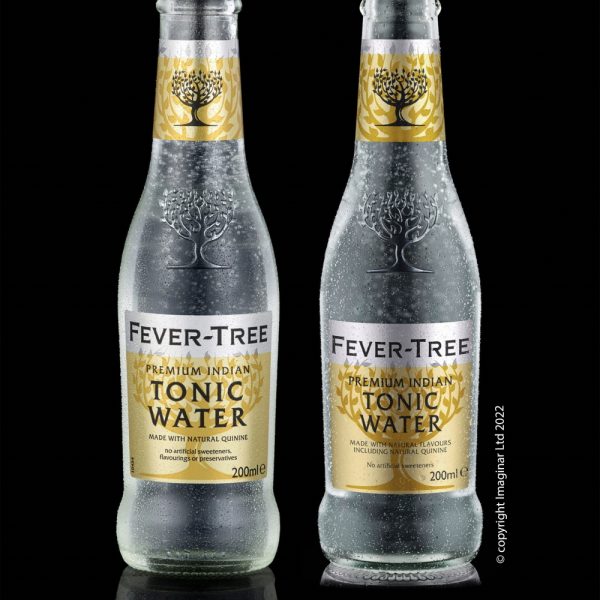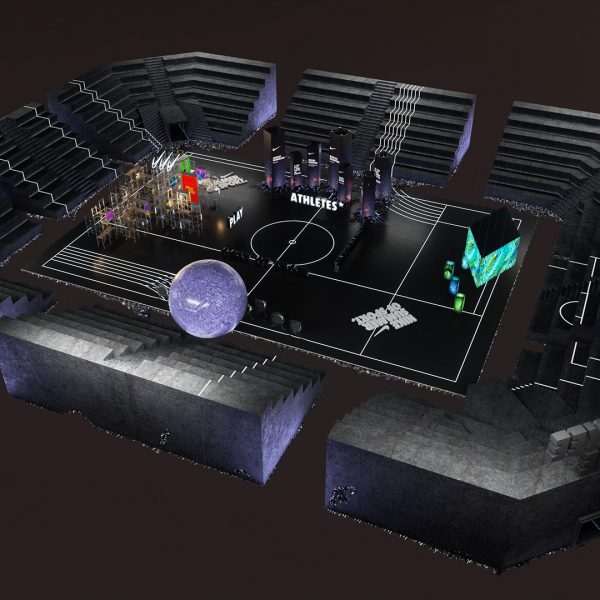What Is CGI?
What Is The Purpose Of CGI
CGI gives you the ability to create high-quality, realistic virtual worlds and objects in the form of digital renders, of things that don't exist in the real world. Alternatively, it allows you to construct things that do exist in the real world where they may be too difficult or expensive to photograph or film. CGI can help to create real-world environments or objects in much more affordable and agile ways. These can be two-dimensional, three-dimensional, or even CGI animation used in films, animated movies, and video clips.
CGI has now been widely adopted across most of the TV broadcast, advertising, media, and entertainment industries, however many of you would associate the term with the production of blockbuster feature films where the boundaries of what can be created on screen are continually being pushed. This is where CGI stands out and where traditional filming and set making stops. CGI has long been instrumental in bringing all kinds of mystical and fictional characters to life and now forms a stable part of the Film and broadcast TV content we consume in our daily lives; I would bet that 90% of what we watch in the cinema will contain some level of CGI content in them.
However, it is also important to recognize the role CGI now plays within other industries like advertising, corporate engineering, and the enterprise industries. Where computer-generated imagery is being used as a tool to design products and create advertising content for corporates and brand services to use, to help them better connect with their customers and clients, whilst making better more cost-effective products.
CGI has improved exponentially, and it will continue to as the new wave of content creators adopt using CGI for their content over and above traditional media like photography and hand-drawn illustration and animation (which is where many of us started out decades ago at art colleges).
Over the last 20 years, you will have seen significant improvements in CGI quality in video games, feature films, and TV. Take for example the Harry Potter Franchises (which I worked on back in 2006 with FrameStore CFC) and the Star Wars Franchise, these are fitting examples of how production companies have embraced the technology from the very outset and have continued to improve on visual quality pushing what was capable with the technology.
Along with the entertainment industries, much of the advertising material we see in brochures, and now AR (Augmented Reality) pop-ups featured online, are all made in CGI and are not photography. One of the most iconic furniture retailers ‘Ikea’ uses this extensively in their brochures featuring around 75% CGI rendered products, demonstrating that the use of CGI is becoming more widely adopted. This is because it gives you many more ways to create the photo-realistic content you are looking to create and use the outputs from the software in a myriad of diverse ways.
What Are The Benefits Of Using CGI?
There are some unique benefits to using CGI over and above traditional media like hand-drawn illustration, photography, and videography. However, we must address ‘the elephant in the room’ as we often find that CGI is misunderstood as an expensive medium to work with, where in fact this could not be farther from the truth once you understand some of the basic ways of working with CGI and how to best maximize its use.
Cost Reduction
CGI can ultimately save you cost as it relies on you working with virtual representations of the real world which are generated in software inside a computer. This means you don’t have to arrange complex photographic or live-action shoots in faraway locations. You can have a smaller team working on a project and it can be done remotely from anywhere in the world, from the comfort of a studio.
You also have a lot more flexibility when building a virtual representation of a product or environment with 3D software, enabling you to create computer-generated renderings that you do not have to retouch in post-production to remove artifacts that you do not want to be left in the scene.
CGI Is Efficient And Flexible To Produce
When you work in CGI you don't need to worry about many physical restrictions e.g. the weather, or not being able to access hazardous environments. You also do not have to ship large expensive items around the world to film or photograph in a specific location.
You can easily make changes should the creative director decide at the last minute that he/she wants to change the colour of something, for example, the colour of a car. The advantages of working with computer-generated imagery also means you can have multiple people with specific expertise working on scenes at the same time to speed up the production process. CG artists can work on individual parts in parallel and bring them together at the end and still refine them at the last minute should a client wish to make adjustments. This is not possible to do when you are working with traditional photography or film (everything has to be ready before you shoot) and then to ‘Fix it in post’ is time-consuming and expensive.
You can also replace background environments easily without having to reshoot the whole video again and adjust remotely from any time zone because the whole environment exists inside the digital world inside a computer program.
Achieve Multi-Level Engagement
Using CGI allows you to leverage the content you can generate from one 3D model that you create. This means once you have modelled, textured, and lit the scene as a 3D model, you can take multiple camera views of that model very easily which can be used to generate greater viewer engagement. This often connects more deeply with the audience and gives you more content to market with at a fraction of the cost of traditional media.
CGI Can Be Used Across Multiple Platforms
When working with CGI you can use the models for images, computer animation, real-time interactive 3D, VR, and AR. Basically, once you have made your model you can put it on any media platform, screen, or device and then animate it or even turn it into an interactive game. The opportunities are limitless which gives you the ability to deploy your content across any print-based or digital platform and engage with your customers or clients in a wide variety of ways that traditional media like photography, illustration, and video won't allow you to do.
Limitless Opportunities With CGI
CGI allows endless opportunities to create and then modify content quickly and easily. This provides huge benefits to clients that want to launch complete product ranges or explore different environments and times of the day as you can switch between day and night by adjusting a few settings within the 3D programs.
But CGI is not just for final print and broadcast level content creation list it is also an important part of the design process where creatives and engineers can use the tools to help visualise in 3D, while prototyping and deciding on final product designs.
Where Is CGI Used
CGI models are used across every conceivable media type, screen, platform, and industry these days. Because the world has turned digital, we use CGI / 3D for much more than you would believe, as nearly every new product that hits the market probably started its life as a 3D model somewhere along its journey. In fact, it is now an integral part of engineering and industrial design. As it allows us to quickly design and then manufacture new products for brands and corporates who understand that they have to find more cost-effective ways to develop products and get them to market, whilst reaching their audiences across a wider selection of digital platforms. This means that working with CGI represents an effective and cost-effective way to develop products and create content.
Using CGI for Product Prototyping
Traditionally creating a product prototype can be extremely expensive and take a lot of time, however, these days CGI has provided a quick and cost-effective way to explore a product design before manufacturing. Because CGI is effectively the same as CAD but lofted into 3d forms you can start by exploring a design in 3 dimensions adding texture and detail and once you are happy with the design you can use 3D printers to create a physical prototype before you go into mass production.
Many Indie companies will also take this opportunity to develop a product and pre-Launch a product by using this method as it allows them to get critical feedback from their customers before finalizing a design before mass production.
Using CGI for Property and Architectural Industries
This was the creative area I first started in before moving into creating images and animations for the advertising industry. CGI is extensively used in architecture and interior design to help designers to explore their design in a real-world scale, creating visuals and flythroughs to help them secure funding and get key design stages signed off by commissioning clients. It is also used to get planning permission. Because of the high value of these architectural projects, the designers have lots of areas to work on where they need to explore and design what needs to feature in the spaces. Where they used to do this in 2D CAD and hand-drawn perspective sketching, they can quickly extrude volumes from the flat 2D plans to create 3-dimensional spaces that are detailed with furniture, fixtures and fittings.
Nowadays you will struggle to tell the difference between a CGI rendered building or interior from a photograph, as the quality of what you can achieve has improved exponentially.
Using CGI for Product Marketing and Commercials
CGI is now used a lot more for marketing products, from cars to food, where it is becoming more costly and inflexible to do this using traditional photography and filming. Marketers understand that these days they need to make content that can be adapted easily to fit multiple formats, and this is where CGI provides a standout solution. As mentioned above, the ability to make quick changes and variations of a product or also making the models into animation, helps brands create cost-effective campaigns of content with a consistent look and feel no matter what format they are used in.
CGI has become widely used in broadcast advertising media too, where animated objects or characters are used to connect with their audiences in engaging ways. CGI content works particularly well when you are dealing with large products like vehicles that need to feature in interesting backgrounds without having to leave the studio.
Using CGI for Film VFX and Entertainment Video Games
CGI or 3D modelling is one of the most important factors associated with creating video games in 2022 because without the CG models you would not have an engaging computer game. This is now a very big industry where the race is on to achieve the most realistic 3d gameplay, where many of the games have gathered such a following because of their immersive 3d environments and visual effects, that they have been translated into feature films where the CGI characters are then taken to another level of realism.
Using CGI for Events and Attractions
CGI is now being used to create virtual environments for brands retailers, corporations, and industries to meet and interact with their employees, customers, and clients to interact with online, in virtual ways. Since the pandemic hit in 2019 we were forced to find ways to connect with each other and without the ability to go to in-person events, the rise of digital virtual meeting spaces happened, and guess how these virtual spaces were created, yes you got it they were made in CGI.
Conclusion
CGI has become one of the fastest growing and widely used media formats over the last 10 years because of its unique properties of being agile, accurate and realistic. CGI allows its creators to explore ideas previously impossible to create by traditional methods whilst offering innovative new media types and platforms for it to be presented on such as 3d printing AR, VR.
As the next wave of creatives adopt new digital ways of working with the media it is fair to assume that more and more of what we consume in press and broadcast medias and the objects that we use day to day will be made using this ever-evolving digital artform and virtual engineering tool.
